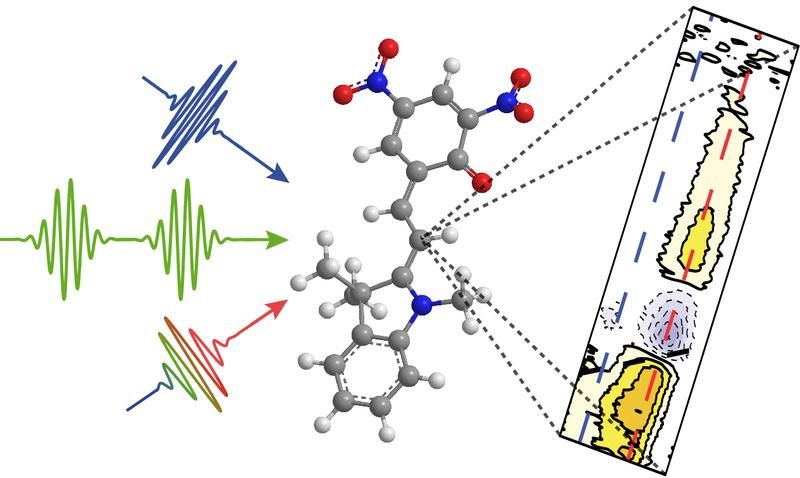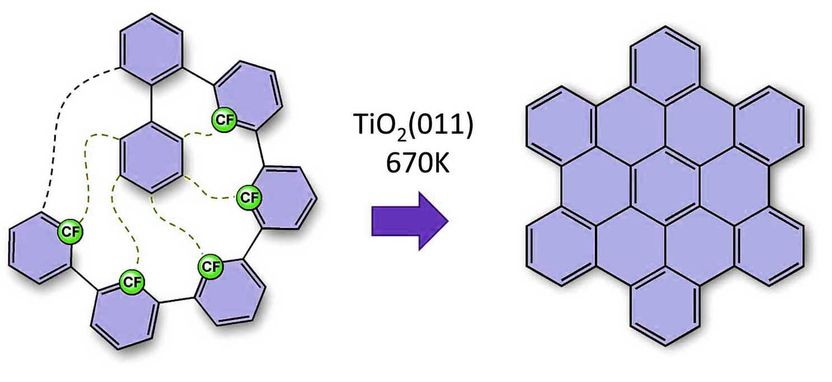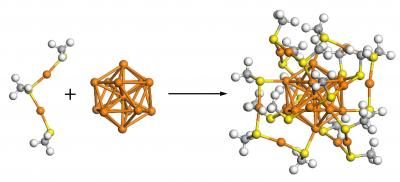DNA Technique Yields 3-D Crystalline Organization of Nanoparticles
First step toward three-dimensional catalytic, magnetic, and/or optical nanomaterials
In an achievement some see as the "holy grail" of nanoscience, researchers at the U.S. Department of Energy's Brookhaven National Laboratory have for the first time used DNA to guide the creation of three-dimensional, ordered, crystalline structures of nanoparticles . The ability to engineer such 3-D structures is essential to producing functional materials that take advantage of the unique properties that may exist at the nanoscale - for example, enhanced magnetism, improved catalytic activity, or new optical properties.
"From previous research, we know that highly selective DNA binding can be used to program nanoparticle interactions," said Oleg Gang, a scientist at Brookhaven's Center for Functional Nanomaterials (CFN), who led the interdisciplinary research team, which includes Dmytro Nykypanchuk and Mathew Maye of the CFN, and Daniel van der Lelie of the Biology Department. "But while theory has intriguingly predicted that DNA can guide nanoparticles to form ordered, 3-D phases, no one has accomplished this experimentally, until now."
As with the group's previous work, the new assembly method relies on the attractive forces between complementary strands of DNA - the molecule made of pairing bases known by the letters A, T, G, and C that carries the genetic code of living things. First, the scientists attach to nanoparticles hair-like extensions of DNA with specific "recognition sequences" of complementary bases. Then they mix the DNA-covered particles in solution. When the recognition sequences find one another in solution, they bind together to link the nanoparticles.
This first binding is necessary, but not sufficient, to produce the organized structures the scientists are seeking. To achieve ordered crystals, the scientists alter the properties of DNA and borrow some techniques known for traditional crystals.
Importantly, they heat the samples of DNA-linked particles and then cool them back to room temperature. "This 'thermal processing' is somewhat similar to annealing used in forming more common crystals made from atoms," explained Nykypanchuk. "It allows the nanoparticles to unbind, reshuffle, and find more stable binding arrangements."
The team also experimented with different degrees of DNA flexibility, recognition sequences, and DNA designs in order to find a "sweet spot" of interactions where a stable, crystalline form would appear.
Results from a variety of analysis techniques, including small angle x-ray scattering at the National Synchrotron Light Source and dynamic light scattering and different types of optical spectroscopies and electron microscopy at the CFN, were combined to reveal the detail of the ordered structures and the underlying processes for their formation. These results indicate that the scientists have indeed found that sweet spot to create 3-D nanoparticle assemblies with long-range crystalline order using DNA. The crystals are remarkably open, with the nanoparticles themselves occupying only 5 percent of the crystal lattice volume, and DNA occupying another 5 percent. "This open structure leaves a lot of room for future modifications, including the incorporation of different nano-objects or biomolecules, which will lead to enhanced nanoscale properties and new classes of applications," said Maye. For example, pairing gold nanoparticles with other metals often improves catalytic activity. Additionally, the DNA linking molecules can be used as a kind of chemical scaffold for adding small molecules, polymers, or proteins.
Furthermore, once the crystal structure is set, it remains stable through repeated heating and cooling cycles, a feature important to many potential applications.
The crystals are also extraordinarily sensitive to thermal expansion - 100 times more sensitive than ordinary materials, probably due to the heat sensitivity of DNA. This significant thermal expansion could be a plus in controlling optical and magnetic properties, for example, which are strongly affected by changes in the distance between particles. The ability to effect large changes in these properties underlies many potential applications such as energy conversion and storage, as well as sensor technology.
Original publication: Nature 2008.
Topics
Organizations
Other news from the department science
These products might interest you

NANOPHOX CS by Sympatec
Particle size analysis in the nano range: Analyzing high concentrations with ease
Reliable results without time-consuming sample preparation

Eclipse by Wyatt Technology
FFF-MALS system for separation and characterization of macromolecules and nanoparticles
The latest and most innovative FFF system designed for highest usability, robustness and data quality

DynaPro Plate Reader III by Wyatt Technology
Screening of biopharmaceuticals and proteins with high-throughput dynamic light scattering (DLS)
Efficiently characterize your sample quality and stability from lead discovery to quality control

Get the chemical industry in your inbox
By submitting this form you agree that LUMITOS AG will send you the newsletter(s) selected above by email. Your data will not be passed on to third parties. Your data will be stored and processed in accordance with our data protection regulations. LUMITOS may contact you by email for the purpose of advertising or market and opinion surveys. You can revoke your consent at any time without giving reasons to LUMITOS AG, Ernst-Augustin-Str. 2, 12489 Berlin, Germany or by e-mail at revoke@lumitos.com with effect for the future. In addition, each email contains a link to unsubscribe from the corresponding newsletter.
Most read news
More news from our other portals
Last viewed contents
Hungarian Chemical Society (MKE) - Budapest, Hungaria
Stepan Increases Ownership in Philippine Joint Venture
Supramolecular_chemistry
New highly stable fuel-cell catalyst gets strength from its nano core - Palladium core protects precious platinum
Hyundai_Cement
Change in the Supervisory Board of ALTANA AG - Dr. Klaus-Jürgen Schmieder takes over the chairmanship

Tracing photochemical reactions





























































